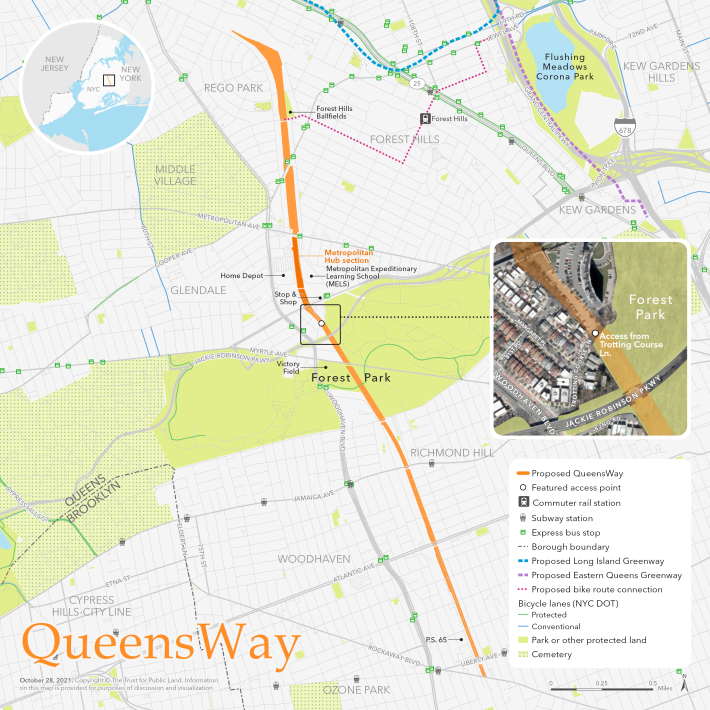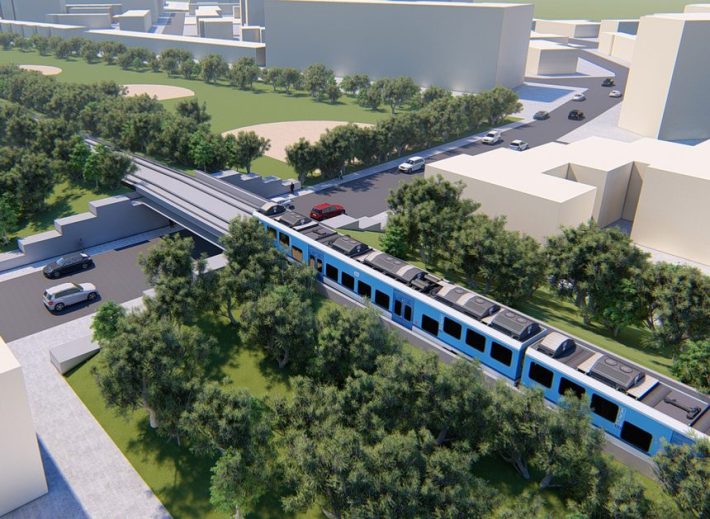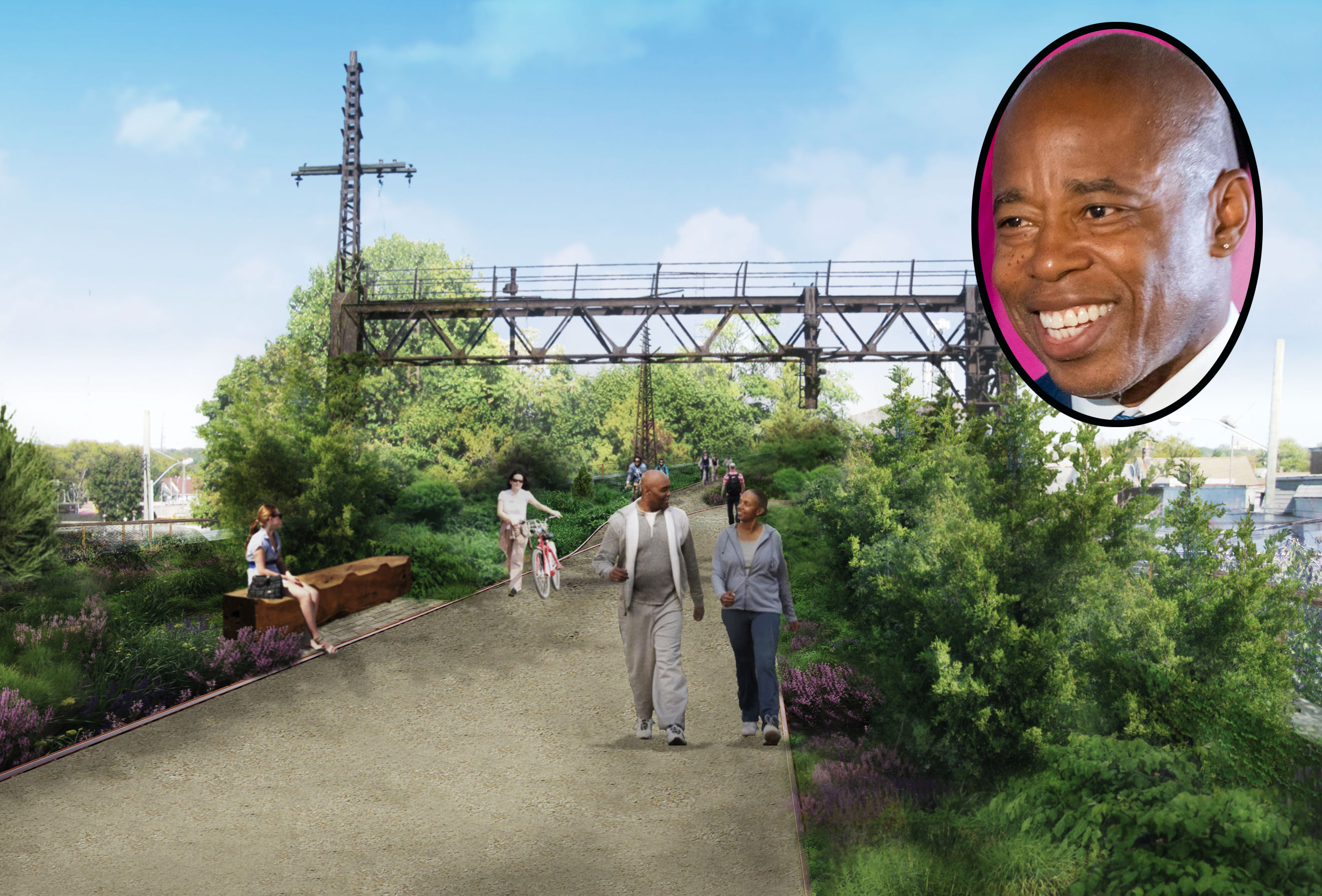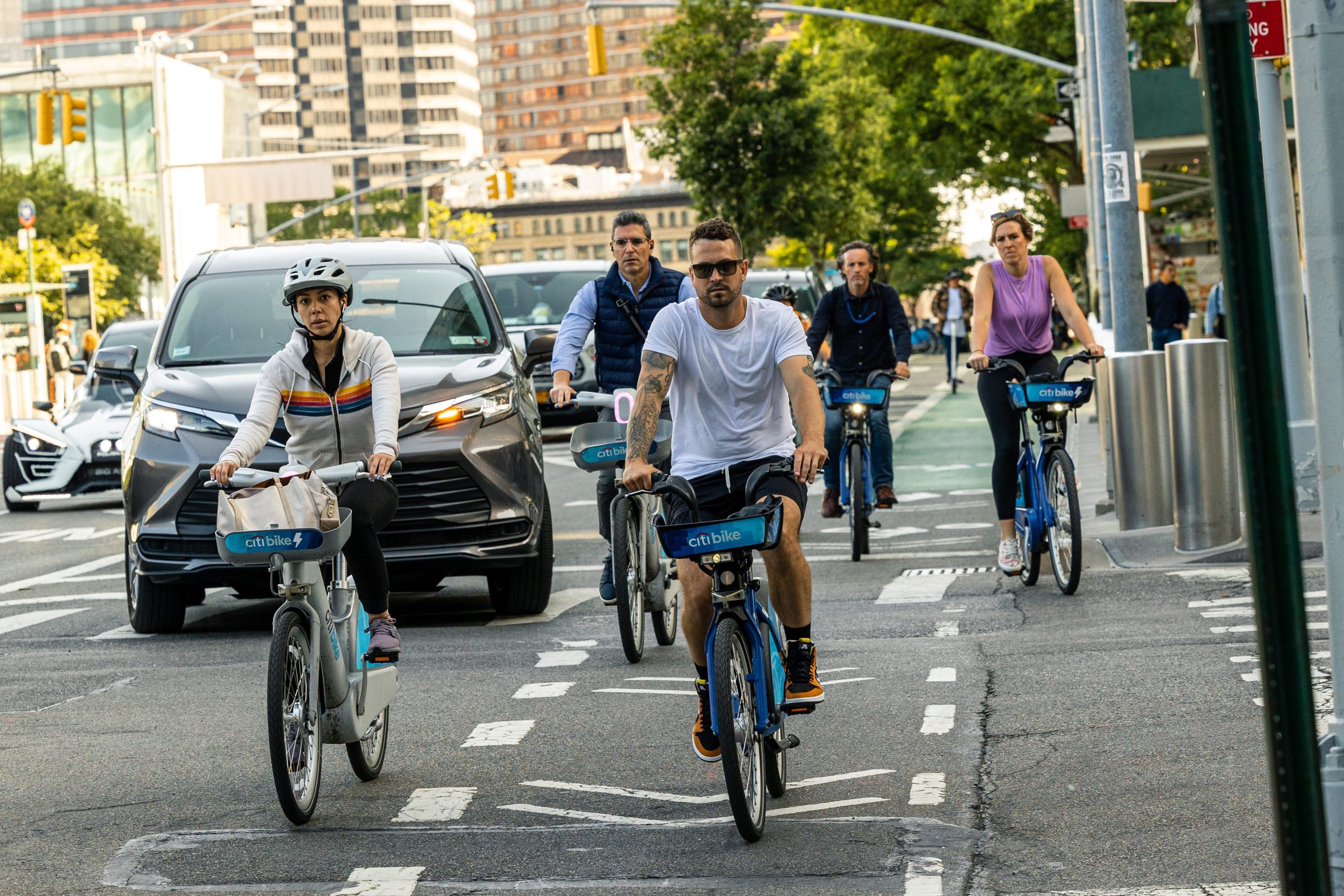Parks first, transit next?

Mayor Adams announced on Friday a large city investment to create the QueensWay — converting a defunct LIRR branch line into a Highline-style park in the heart of the city's biggest borough — while supporters of a rival transit project called QueensLink blasted what they believe is the mayor's decision to support a park ahead of a vital transit connection.
First, the news: Adams said he would spend $5 million for an environmental review of a 3.5-mile abandoned Rockaway Beach Branch right-of-way plus $30 million to build the first phase of the park: an educational and recreational area known as the Metropolitan Hub near the Metropolitan Expeditionary Learning School, the Glendale baseball fields and a farmer's market.
"We're reclaiming space that this community wanted for decades," Adams said. "All New Yorkers deserve access to high-quality park space. ... This will convert abandoned railroad tracks, which have been used as a dumping ground, into a five-acre linear park and provides a safe way for residents to walk to jog, to enjoy the open space."
Supporters of the $150-million overall project tout what they expect will be one million visitors along a green corridor that links many neighborhoods and existing parks and bike infrastructure. More than 330,000 people live within a one-mile walk of the QueensWay, many without great access to parks.

But the announcement was not without controversy, as supporters of the QueensLink, a proposal to reactivate the right-of-way for transit, said the mayor's decision makes their idea impossible to implement in the future and is a stand "against transit equity" in Queens.
"QueensLink and its supporters are dismayed to hear about the backroom deal made to block transit equity for residents of Queens by converting the former Rockaway Beach Branch rail line into a park," supporters said in a statement. "For years, QueensLink has called for this city-owned right-of-way to be used for both transit and park space. Building the park, known as the QueensWay, would block any future use of transit on this line and deprive residents of southern Queens of a faster commute, less traffic, while reducing pollution and carbon emissions."
Some Queens pols have wanted it both ways. Adams's decision to back the park comes after 15 elected officials from a swathe of Queens signed on to a letter asking him and Gov. Hochul to look into the feasibility of the QueensLink between Rego Park and Ozone Park — which is the same route as the QueensWay. Borough President Donovan Richards and Assembly Members Jenifer Rajkumar and David Weprin all spoke glowingly about the QueensWay on Friday — but all had also signed the letter supporting QueensLink, which would carry 47,000 daily riders, some saving an hour a day in commute times.
Richards at least alluded to the need for more rail service in Southeast Queens in his remarks, which suggested some common ground.

"We still know much more needs to be done to address the inequities around our borough, ... We know that much of Queens remains a transit desert as well, with no subway access and limited and often poor bus service," Richards said. "This is not that either/or scenario here. We need to do both when it comes to making sure that we can enhance our public transportation and also ensuring that our communities have access to open space, and we should ensure that those competing interests are met together as well. This shortcoming [of transit] disproportionately impacts low-income communities where residents depend on mass transit to go to work. ... So the state needs to get the train moving on the QueensLink's environmental impact study as well. It is the role of government to address difficult issues like this and we only get things done by working collectively."
And supporters of the QueensLink said their plan also includes park space.
Boosters of public transit observers were less optimistic, calling the announcement "an all-time mistake" for the city.
Turning the Rockaway Beach Branch Line ROW into a park instead of a mixed transit corridor is an all-time mistake for the NYC. https://t.co/d6DHmdyhaX
— Second Ave. Sagas (@2AvSagas) September 16, 2022
QueensLink supporters were always facing an uphill battle because the MTA never seemed interested in reactivating the right-of-way as a modern subway. The agency finished a feasibility study on the idea in 2018, but didn't release it until 2019, under political pressure to do so. When the study was finally released, advocates for the transit project were so baffled by the estimated $8 billion cost that they released their own study in which they said the project could be done for $3.5 billion, and claimed that the MTA greatly inflated non-construction costs in order to sandbag the idea.
Even with the fight over the costs, the MTA did include reactivating the Rockaway Beach Branch as a project to study for possible inclusion in its 2025-2044 20-Year Needs Assessment, which is set to be released by October 2023, indicating a possible future for the system expansion.
QueensWay supporters have their own political support for their proposal that they say would bring more open space to areas of central Queens that don't immediately border Forest Park, including Rep. Grace Meng, Assembly Member Andrew Hevesi and Council Member Lynn Schulman. And in May this year, Bike New York Director of Communications Jon Orcutt and Regional Plan Association Vice President Kate Slevin wrote an editorial in favor of the QueensWay, calling it a more feasible and shovel-ready project than the QueensLink.
And Carter Strickland, New York state director of the Trust for Public Land, suggested that if you are weighing all things, the QueensWay is a better investment.
"Could we have the QueensWay and the QueensLink together? Anything is technically feasible," he said, "but the question is is it wise and does it makes sense? The MTA has looked at the QueensLink — and will look at it once more — and they think it doesn't make sense. But safe routes to schools and safe routes to parks is so crucial. And in a world where more people are working from home, investments in open space near where people live may simply be more important than bolstering the traditional hub-and-spoke commute system."
The QueensWay will be a joint project of the Parks Department and the Economic Development Corporation, said Deputy Mayor Meera Joshi, adding that in the Adams administration, "We consider parks as part of our infrastructure. And because a right of way is a terrible thing to waste, it's recycling it and being creative about how we use it."
Here's the QueensWay promotional video:






